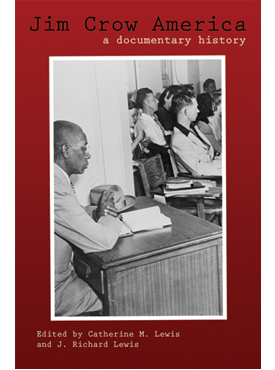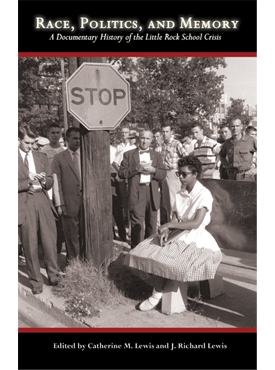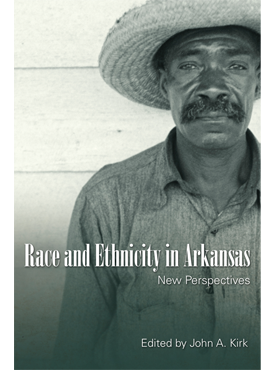The term “Jim Crow” has had multiple meanings and a dark and complex past. It was first used in the early nineteenth century. After the Civil War it referred to the legal, customary, and often extralegal system that segregated and isolated African Americans from mainstream American life. In response to the increasing loss of their rights of citizenship and the rising tide of violence, the National Association for the Advancement of Colored People was founded in 1909. The federal government eventually took an active role in dismantling Jim Crow toward the end of the Depression. But it wasn’t until the Lyndon Johnson years and all the work that led up to them that the end of Jim Crow finally came to pass.
This unique book provides readers with a wealth of primary source materials from 1828 to 1980 that reveal how the Jim Crow era affects how historians practice their craft. The book is chronologically organized into five sections, each of which focuses on a different historical period in the story of Jim Crow: inventing, building, living, resisting, and dismantling. Many of the fifty-six documents and eighteen images and cartoons, many of which have not been published before, reveal something significant about this subject or offer an unconventional or unexpected perspective on this era. Some of the historical figures whose words are included are Abraham Lincoln, Marcus Garvey, Booker T. Washington, Richard Wright, Paul Robeson, Langston Hughes, Adam Clayton Powell, and Marian Anderson. The book also has an annotated bibliography, a list of key players, a timeline, and key topics for consideration.
Catherine M. Lewis is associate professor of history and coordinator of the Public History Program at Kennesaw State University. She is the author of a number of books, including, with J. Richard Lewis, Race, Politics, and Memory: A Documentary History of the Little Rock School Crisis, The Changing Face of Public History, and Don’t Ask What I Shot: How Eisenhower’s Love of Golf Helped Shape 1950s America.
J. Richard Lewis is a desegregation consultant and former educator and academic administrator and president of JRL Educational Consulting.
“Historian C. Lewis and educator J. R. Lewis have compiled this eminently useful collection of primary source documents that will most certainly be invaluable to any history student trying to understand the complexities of Jim Crow segregation. Divided thematically into five chapters, this volume features documents that demonstrate the manner in which the US’s apartheid system was invented, built, lived, resisted, and finally dismantled–none of which was an easy task. Clearly designed for classroom use, the volume includes a time line, a list of Web resources, an annotated bibliography, and even discussion questions–all of which are a bonus to the extremely functional collection of documents. Although many of the documents have been published previously, such as the Emancipation Proclamation, many have not; never have all these documents been published together. Most histories of Jim Crow segregation have focused either on one region or on a specific topic such as gender or law. This volume endeavors to sample all and does so admirably. The editors provide newspaper articles, letters, essays, political cartoons, legal documents, and photographs from both sides of the divide and from all around the nation; they flesh out Jim Crow’s strange career in a manner that will help students understand the craft of history. A few typos are evident but do not distract overall from the outstanding content. Summing Up: Essential. Upper-level undergraduates through researchers/faculty.”
—Choice (D. W. Bilal, University of Illinois at Springfield)

Adopted at: University of Arkansas
Course: HIST / AAST 3243 African American History Since 1877
Course Description: Will study the major social, political, and economical issues relating to the African American experience beginning with the late post-Reconstruction period and will include all of the major personalities and influences in the Civil Rights Movement, from 1877 to the present.
Professor: Michael Powers
Term: Spring 2019
Adopted at: Southeast Missouri State University
Course: UI 508, African Americans during the Era of Segregation
Course Description: A study of African Americans from the end of the Civil War to the beginning of the Civil Rights Movement
Professor: Steven Hoffman
Term: Fall 2015




